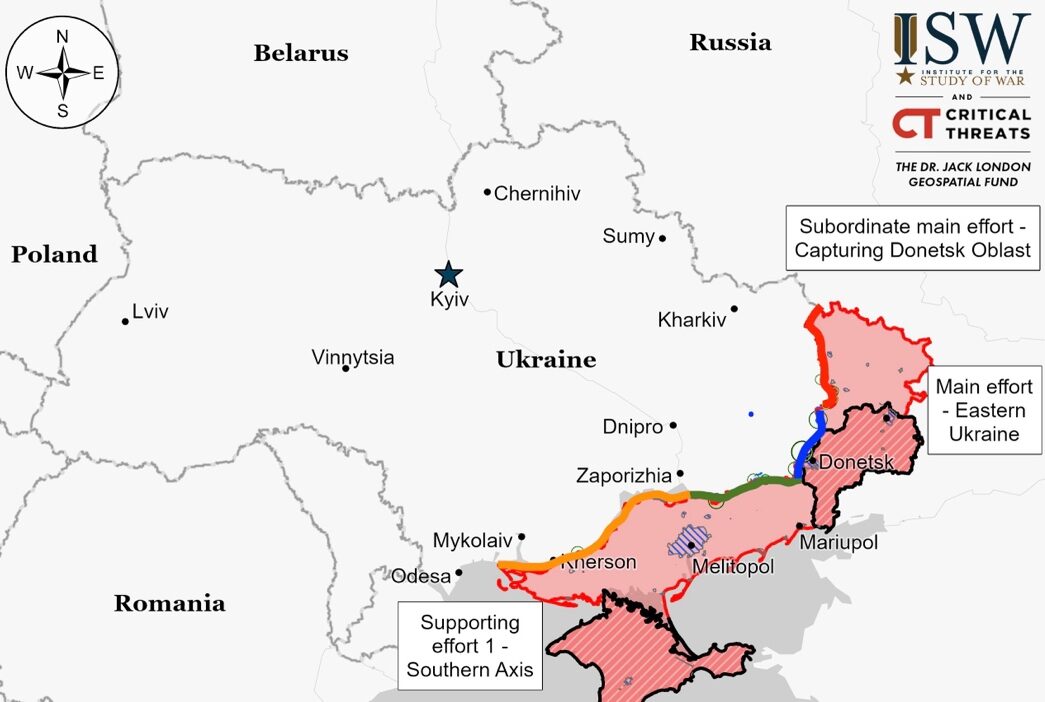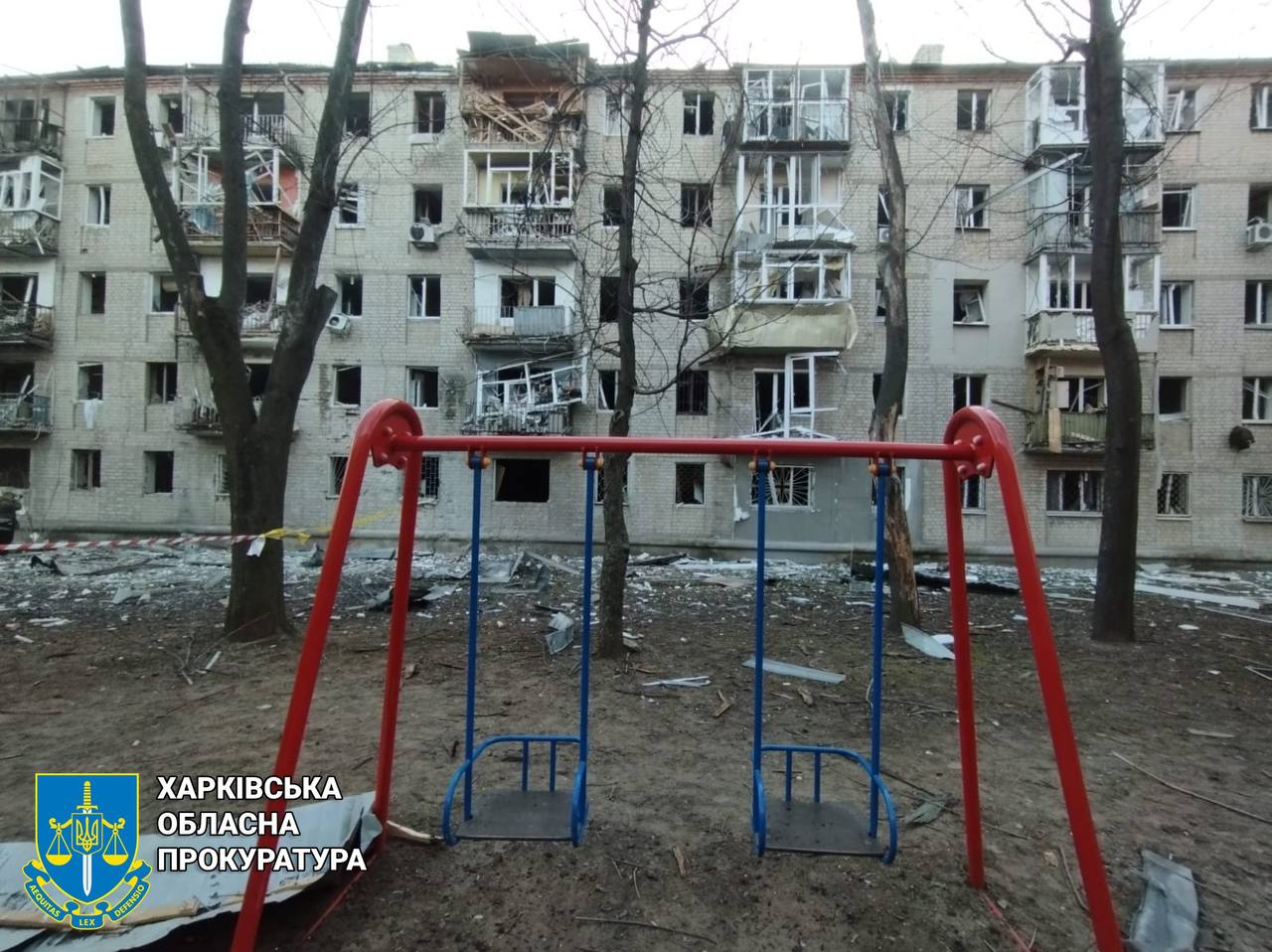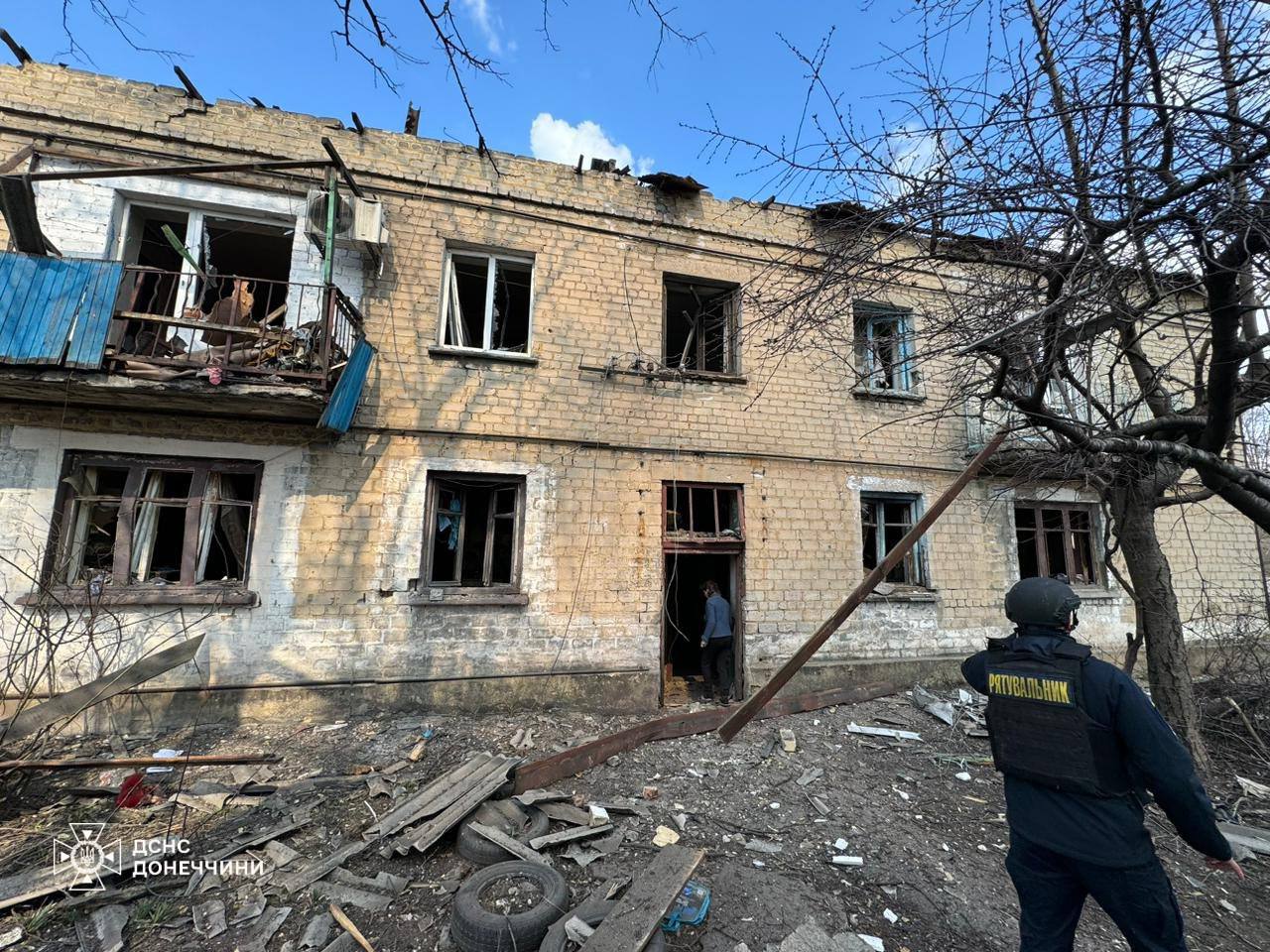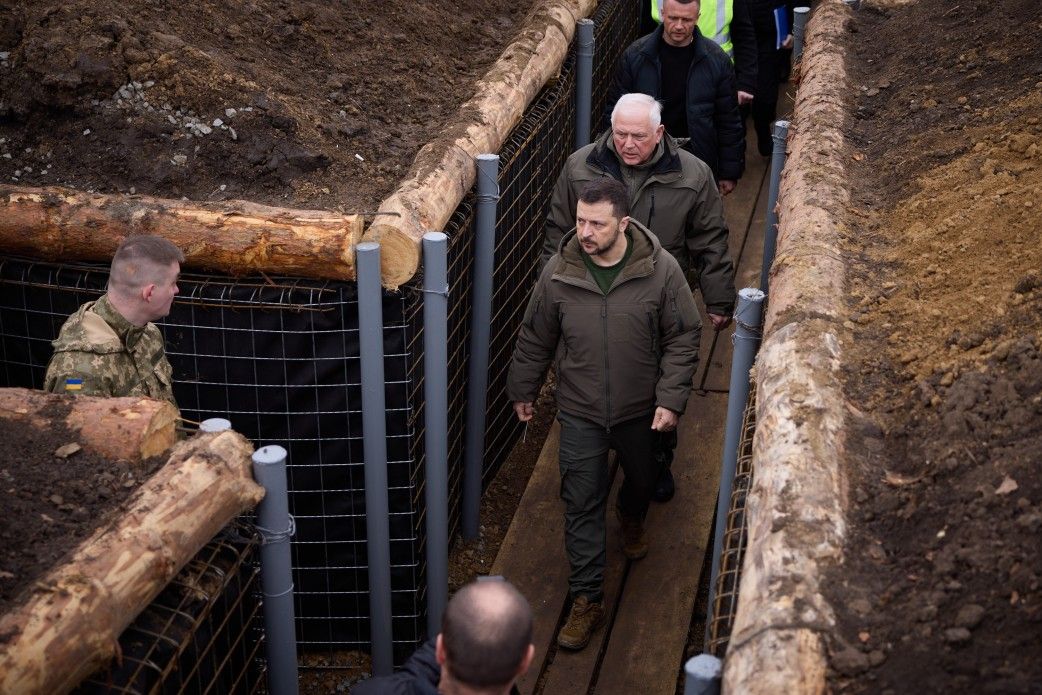Summary of the day: The UN Human Rights Monitoring Mission in Ukraine released its 38th report, highlighting Russia’s systematic human rights and humanitarian law violations in Ukraine, including abuses towards Ukrainian POWs. In response to the Crocus City Hall attack on March 22, Russian officials are ramping up rhetoric against the US and the West, labeling them as supporters of “terrorist” attacks, and are increasing legal pressures on migrants within Russia as part of a broader crackdown. Meanwhile, Russian military forces have made advances in Ukraine near Avdiivka and southwest of Donetsk City, amidst ongoing complaints from Russian Storm-Z personnel about their treatment by the Ministry of Defense, signaling issues within Russia’s military and social systems.
What Can I Do To Help Ukraine? This is a question I receive all the time. We at Transform Ukraine are building longer-term housing for internally displaced Ukrainians. Visit Rebuild Ukraine for how you can assist in housing a Ukrainian family displaced by the war.
Beyond Ukraine – March Towards World War III
The Russian ambassador to Poland, Sergei Andreyev, did not attend a meeting with the Polish Foreign Affairs Ministry to discuss a recent incident where a Russian cruise missile flew over Polish airspace. The missile was in Poland’s airspace for 39 seconds near the Ukrainian border, which prompted Poland to scramble F-16 fighters in response. This incident follows previous ones where Russian missiles have crossed into Polish territory, including one that resulted in two fatalities later attributed to Ukrainian air defense during an engagement with Russian forces. The Russian envoy cited a lack of evidence provided as the reason for his non-appearance.
Moldovan President Maia Sandu has alleged that Russia is plotting a coup to overthrow her government. Moldova contains the pro-Russian separatist region of Transnistria, which hosts around 2,000 Russian troops.
UK General Rob Magowan admitted the military lacks ammunition and equipment to fight Russia for more than a few months, echoing concerns about the country’s readiness for conflict. This follows a bipartisan report highlighting ongoing shortages hindering preparation for war. Defense Secretary Grant Shapps reassured that due to NATO membership, the UK wouldn’t face Russia alone.
Situation On The Land, Sea, and Air in Ukraine
Ukrainian Special Operations Forces reported using American HIMARS to destroy a Russian Buk missile system in Zaporizhzhia. The target was identified by reconnaissance and confirmed destroyed following a precise strike. The Buk system is a medium-range surface-to-air missile system used by Russia, notable for its role in the downing of Malaysia Airlines Flight 17 in 2014. Verification of the destruction and the responsibility for it from the provided video remains challenging for analysts. Ukraine is also modernizing its defense by adapting Buk systems to use Sea Sparrow missiles.
Russian forces are building defensive barriers at the entrance to Sevastopol Bay in Crimea to shield the Black Sea fleet from Ukrainian strikes, which have recently intensified. After Ukraine targeted Russian ships with missiles and sea drones, including hitting the “Yamal” and “Azov” landing ships and a patrol ship, Russia is taking measures to prevent access and enhance protection. Ukraine confirmed the effectiveness of its domestically-produced Magura V5 naval drones and the Neptune missile system in these attacks. With a significant portion of Russia’s fleet now compromised, Russia has also replaced its naval commander to counter the ongoing threats.

Luhansk Front – Initiative Russia
Donetsk Front – Initiative Russia
Zaporizhia Front – Initiative Russia
Kherson (Dnipro River) Front – Initiative Russia
Fighting continued along the Kupyansk-Svatove-Kreminna line without any confirmed changes to the frontline. Skirmishes were reported northeast and southeast of Kupyansk, as well as west and south of Kreminna. Despite Russian claims of progress near Terny, there’s no visual proof. Chechen special forces are reportedly active near Bilohorivka, according to Chechen leader Ramzan Kadyrov.
Russian forces made unconfirmed advances west of Bakhmut, with reports of progress along a railway and highway near the area. Despite claims of capturing Ivanivske, no visual evidence supports these assertions. Intense fighting continues around Bakhmut, with Russian troops reportedly moving equipment and personnel through key locations east of the city. The situation reflects ongoing and intense military activity without significant frontline changes.
Russian forces made confirmed advances west of Avdiivka, with geolocated footage showing progress in Berdychi and Orlivka. Reports also indicate attacks within Semenivka, where Ukrainian forces are counterattacking. Additional advances by Russian forces include movements near Orlivka, Tonenke, Umanske, Pervomaiske, and Nevelske. Despite the advancements, ongoing positional fighting continues around these areas, indicating a sustained intensity in the conflict.
Russian forces made advances in Novomykhailivka, southwest of Donetsk City, amidst ongoing battles in the region. Positional clashes were reported near Heorhiivka and Krasnohorivka to the west, and also near Pobieda southwest of Donetsk.
Fighting persisted near Staromayorske and Urozhaine, close to the Donetsk-Zaporizhia border, indicating ongoing military activity in the area.
Ongoing fighting was reported in western Zaporizhia Oblast, with no shifts in the frontline. The clashes took place around Robotyne and nearby areas including Mala Tokmachka, Novoprokopivka, and Verbove.
Continued fighting was reported in the eastern part of Kherson Oblast, particularly around the area of Krynky.
Ukrainian Victims Of War
In the past 24 hours, Russian attacks on civilian targets resulted in the death of four people and injuries to 22 others:
- A Russian attack on Kharkiv’s Shevchenkivskyi district killed one civilian and injured 19 others, including four children. The strikes, which used a glide munition capable of reaching up to 90 km, targeted residential areas and marked the city’s first air bomb attack since 2022. The munition, identified as possibly being a UMPB D-30, damaged two residential buildings, an administrative building, and a medical facility, among others. The injured children range from three months to 13 years old.
- A Russian attack on Borova, a town in Kharkiv Oblast, resulted in the death of a 12-year-old boy and damage to homes and a kindergarten.
- A Russian drone strike in Mykhailivka, Kherson Oblast, killed a 61-year-old woman in her home.
- Russian troops attacked Nikopol in Dnipropetrovsk Oblast, killing a man and injuring a 49-year-old woman. The attacks included artillery shelling and strikes by kamikaze drones, damaging multiple buildings and infrastructure.
- Russian forces attacked Ukrainsk in Donetsk Oblast, injuring two people. The attack damaged 29 apartment buildings and one retail facility.
 Aftermath of Russian Attack on Kharkiv Apartment Building
Aftermath of Russian Attack on Kharkiv Apartment Building
 The aftermath of Russian attack against the city of Ukrainsk
The aftermath of Russian attack against the city of Ukrainsk
Ukraine News
Russian forces launched drone and missile attacks on Ukraine overnight, with 13 Shahed drones deployed and 10 shot down by Ukrainian defenses over Kharkiv, Sumy, and Kyiv oblasts. Strikes damaged civilian sites in Izyum and an industrial facility in Mykolaiv, while a Russian cruise missile hit Kharkiv City. Ukrainian forces also downed a cruise missile over Dnipropetrovsk Oblast.
Ukraine’s Air Force spokesperson Illia Yevlash stated that the country has the capability to shoot down Russia’s 3M22 Zircon hypersonic cruise missiles using air defense systems like SAMP/T and Patriot. This statement followed an attack on Kyiv on March 25, believed to involve a Zircon missile, which injured at least two individuals. The Zircon, with a top speed of 8-9 Mach, slows to Mach 4.5 when striking, making it vulnerable to Ukrainian defenses. There’s speculation that Russia might be testing Ukraine’s air defenses or experiencing a shortage of other missiles. Russia used the Zircon against Ukraine for the first time on Feb. 7, causing casualties and significant injuries. The Zircon missile is a recent addition to the Russian arsenal, boasting speeds up to Mach 9 and a considerable range.
President Volodymyr Zelensky inspected new defensive fortifications in Sumy Oblast, including trenches and command posts, following criticism of slow progress last fall. Ukraine is constructing extensive defenses, with Zelensky reviewing a project for a platoon stronghold featuring reinforced structures and protective positions for vehicles. Additionally, he visited the 117th Separate Territorial Defense Brigade, discussing defense strategies and the challenge of Russian guided bombs. Sumy Oblast has faced increasing Russian attacks, prompting intensified evacuations in border towns like Velyka Pysarivka.

Ukrainian President Volodymyr Zelensky has replaced Oleksiy Danilov with Oleksandr Lytvynenko as the Secretary of the National Security and Defense Council (RNBO). Lytvynenko, 52, has extensive experience, including studies in Russia, Canada, Germany, and the UK, and has held various managerial and academic roles in Ukraine’s security and defense sectors. Despite social media concerns about his FSB Academy background, those familiar with Lytvynenko consider him professional, experienced, and patriotic. He has worked under four Ukrainian presidents and has a reputation for being a skilled analyst and a respected figure across government departments. Recently serving as the deputy secretary of the RNBO and head of Ukraine’s Foreign Intelligence Service, Lytvynenko is seen as the best fit for his new role, with a focus on analytics and sanctions improvement during the war. His low-profile, analytical approach is expected to bring initiative to the RNBO while maintaining a discreet presence.
Russia’s strike on Ukraine’s largest hydroelectric station, the Dnipro Hydroelectric Power Plant, on March 22, resulted in environmental damages currently estimated at $3.5 million, with expectations of this number increasing. The attack, part of a broader offensive against Ukraine’s energy infrastructure, caused significant damage to the plant and its adjacent dam. However, Ukraine’s Water Agency has confirmed no risk to the water supply for civilians. Environmental damage in Ukraine due to the conflict has reached at least $60 billion since February 2022, with critical infrastructure losses also significant. The Dnipro plant’s damage alone may amount to billions, yet to be fully assessed.
The Security Service of Ukraine (SBU) apprehended two Ukrainian nationals on charges of aiding the Russian FSB in plotting missile strikes against Ukrainian military and communication infrastructures, including the Kyiv TV tower. The individuals, arrested in Kyiv and Odesa, were caught during a special operation while collecting information on potential targets. One was employed to gather data on military base locations, while the other surveilled the condition of the Kyiv TV tower and a thermal power plant. Detained since late January, they now face life imprisonment under Ukraine’s Criminal Code if convicted.
Ukraine’s High Qualification Commission approved Roman Ihnatov’s resignation request. Ihnatov, denying allegations of holding Russian citizenship, stepped down from his position voluntarily. Earlier, Ukraine’s Foreign Intelligence Service accused him of having Russian citizenship, which Ihnatov refuted. An investigation was opened against him regarding a visit to Russian-occupied Luhansk in 2014, which he denied any wrongdoing.
Ukraine’s Allies
France, under the leadership of Defense Minister Sébastien Lecornu, is escalating its support for Ukraine’s defense with a focus on advanced weaponry and increased ammunition supplies. The nation plans to amplify military production with 600 AASM precision-guided bombs set for production in 2024, a number that is expected to double in 2025. These bombs, designed to be compatible with French Rafale and Mirage 2000 fighters, may also be adapted for use with Ukrainian F-16s. In addition, France is rebooting the production of the SCALP cruise missile, targeting 40 units by 2024, which have been effectively used by Ukraine in maritime engagements. Artillery ammunition production will also see a rise, with an anticipated 100,000 shells in 2024, of which 80,000 are intended for Ukraine. This marks a 167 percent increase from prior outputs. To ensure timely delivery, France is prepared to use state powers to expedite manufacturing processes. France has also pledged to provide Ukraine with 78 Caesar 155mm self-propelled howitzers by the end of 2024, VAB armored personnel carriers, and AMX-10 reconnaissance vehicles.
French President Emmanuel Macron’s firm support for Ukraine extends to the suggestion of deploying French troops, a move that stands out against other European nations, especially in light of a temporary halt in US aid due to internal politics. Amidst the pause in American financial support, Lecornu has called for greater European investment in Ukraine’s defense, underlining the importance of not overburdening American taxpayers. France is also participating in a Prague-led initiative to procure ammunition, reinforcing the EU’s position as a top supporter of Ukraine, contributing more than any individual country like the US.
Polish willingness to send troops to Ukraine has increased to 10 percent this year, influenced by what experts dub the “Macron effect” after the French President’s stance on potential military involvement. A recent poll also shows rising Polish support for allowing citizens to join the fight in Ukraine, up to 27.1 percent from last year’s 3.4 percent. Support for humanitarian aid remains high at 75 percent, and a majority back military aid, including 54.1 percent endorsing the dispatch of heavy weaponry. The survey, involving 1,000 participants, was carried out from March 8-10.
Germany will provide Ukraine with 10,000 artillery rounds from its military stocks to address ammunition shortages. Delays in US aid have impacted Ukraine’s defense, leading to significant losses. Berlin announced a 500-million-euro aid package earlier, with the first batch of shells being part of a larger aid plan. Germany plans to deliver shells in three phases, with additional support through a Czech initiative and a bilateral agreement with another country for long-term supply. Germany has become Ukraine’s second-largest military donor, providing substantial assistance to date.
Poland will double its contribution to the Czech-led initiative to purchase artillery shells for Ukraine. The Czech Republic aims to secure 1.5 million rounds. Polish Foreign Minister Sikorski highlighted the urgency of US assistance for Ukraine and praised Latvia’s support. Poland has been a strong ally of Ukraine, providing significant military aid and hosting Ukrainian refugees. However, recent tensions arose over agricultural trade disputes and border blockades by Polish farmers.
The US is in talks with Turkey to buy more explosives for artillery shells to aid Ukraine amid ammunition shortages. Delays in US funding have affected Ukraine’s ability to defend itself, leading to losses. Turkish supplies could triple NATO-standard shell production. Turkish company Repkon aims to produce 30% of US-made artillery ammunition by 2025. The Pentagon has already bought ammunition from Turkish company Arca Defense, with more purchases planned. US and European ammunition production is expected to increase in 2025, but Russia’s production currently outpaces supply to Ukraine.
The Council of Europe Development Bank granted a €100 million ($108 million) loan to rebuild housing for Ukrainians affected by the war. Infrastructure Minister Kubrakov stated over 2,000 families will benefit. The war has extensively damaged Ukraine’s infrastructure, with nearly half of households in affected regions reporting destruction. The World Bank estimates Ukraine’s reconstruction cost at $486 billion over a decade. To aid recovery, the European Council approved the Ukraine Facility, providing €50 billion ($54 billion) over four years.
UK Defense Secretary Grant Shapps urged Europe to maintain open trade with Ukraine, emphasizing the UK’s commitment to tariff-free imports. France and Poland previously proposed restrictions on Ukrainian agricultural imports, threatening ongoing trade negotiations. However, Belgium’s EU Council presidency updated the draft agreement, extending duty-free trade with Ukraine. Parties are negotiating to find a compromise, considering different years for import calculations. Potential restrictions could cost Ukraine millions in lost revenue. Ukraine relies on liberalized trade to support its economy during the conflict with Russia.
EU ambassadors have reached a compromise on extending the trade agreement with Ukraine, aiming to balance support for Ukraine with protection for EU agricultural markets. The agreement will be presented to the European Parliament for approval. The trade agreement was initially introduced to help Ukraine amid export restrictions due to Russia’s invasion. Polish farmers are protesting against Ukrainian imports, prompting discussions on safeguards for EU farmers in case of excessive imports from Ukraine.
Ukrainian Mobilization and Defense Industrial Base
Ukraine’s Defense Ministry is revising a mobilization draft law to lower the enlistment age and mandate basic military training for adults. Passed in its first reading in February, the bill suggests mobilization from ages 25 to 60, with voluntary earlier service from age 18, and includes a deferral until conscription age. Basic military training is to be introduced in higher education by 2025. The new basic military service, set to replace conscription, will last five months during peacetime and three months in wartime. After over 4,000 amendments post-first reading, President Zelensky signed changes to demobilization conditions in late February. A recent amendment on demobilization after 36 months without Supreme Commander-in-Chief approval was rejected by the parliament committee.
Ukraine is advancing towards digital transformation, even amid the war, with over 21 million citizens now accessing government services via the Diia app. The Ministry of Digital Transformation, headed by Mykhailo Fedorov, is also focusing on technological innovation in warfare, such as the development of drones. Additionally, mobile apps like ePPO, which allow citizens to report incoming aerial threats, are enhancing air defense efforts. This crowdsourced spotting, combined with traditional military monitoring, has improved Ukraine’s air defense capabilities. The country is further modernizing its systems with automated detection using mobile phones and AI to differentiate between enemy weapons and other sounds. The next-gen Zvook system aims to deploy thousands of sensors for more effective air threat detection and interception, with NATO countries showing interest in the technology.
Russia News
The UN’s 38th report, released on March 26, highlights Russia’s human rights abuses in Ukraine, including torture and execution of Ukrainian POWs, based on interviews with 60 recently released POWs. Documented abuses between December 2023 and February 2024 include beatings, electric shocks, threats of execution, and sexual violence against POWs, with at least 32 executed in verified incidents. The report also covers the forced Russification of occupied Ukrainian territories, marking a breach of international law.
After the Crocus City Hall attack on March 22, Russian authorities have heightened legal actions against migrants, significantly increasing the number of entry rule violation cases. Specifically targeting Tajik migrants, the crackdown includes court hearings for hundreds and expected large-scale deportations. Despite no official orders, an insider hinted at a push for harsh measures in ambiguous situations. Recent police raids on migrant workplaces, such as the Wildberries warehouse, have led to multiple detentions. Amid calls for anti-migrant policies, Russia’s dependence on migrant labor suggests a balanced approach, continuing workplace raids and border crackdowns as a temporary response to public demands for action following the attack.
Russia’s Allies
To counter potential fuel shortages after Ukrainian drone strikes on its oil refineries, Russia is increasing gasoline imports from Belarus, with purchases rising from none in January to 3,000 metric tons in early March. Russia, usually a fuel exporter, has halted gasoline exports and is negotiating further imports amid disruptions that have paused refining capacity at seven Russian refineries, affecting about 7% of its total.
Russian Mobilization and Defense Industrial Base
Storm-Z personnel in Russia have voiced complaints about neglect and poor treatment by the Ministry of Defense (MoD), despite the MoD’s efforts to showcase the effectiveness of its recruitment and benefits systems. A video highlighted the grievances of a Storm-Z unit from Kaluga Oblast, noting that out of 230 personnel sent to the front, only 38 survived, with survivors struggling to receive combat veteran status or promised compensation. Relatives of deceased or injured Storm-Z fighters also expressed their dissatisfaction, directly appealing to President Putin for recognition and benefits that have not been granted. Despite the MoD’s claims of improving the process for obtaining veteran benefits, these measures seem not to extend to all contract personnel, especially those recruited from penal colonies for front-line assaults.
Vedomosti, a Russian news outlet, reports that Baikal Electronics, facing US sanctions, has encountered significant challenges in its efforts to domestically package semiconductor chips, resulting in over half of its processors being defective. The company’s move towards in-house chip packaging, starting in late 2021, has been hindered by outdated equipment and a shortage of skilled workers, leading to high defect rates in processor production.
Albatross LLC, a Russian drone developer, informed TASS that its Albatross M5 long-range reconnaissance drones were used by Russian forces to coordinate air and artillery strikes against pro-Ukrainian Russian raids in Belgorod Oblast. The company highlighted that the upgraded Albatross M5 model can reach distances between 60 to 80 kilometers.
RIA Novosti, a Russian state news agency, reported that Russian tanks, including the T-72B3, T-72B3M, T-80BVM, and T-90M models, deployed in Ukraine, are equipped with Reflex-M guided weapon systems. These systems use Invar-M/M1 anti-tank guided missiles to target Ukrainian and Western-made vehicles.
Russian Narrative and Propaganda
In the wake of the Crocus City Hall attack, Russian officials are leveraging the event to level broad accusations against the US and Western countries, suggesting their involvement in “terrorist” attacks to garner domestic support for Russia’s military actions in Ukraine. Without specifically tying these countries to the Crocus City Hall attack and despite evidence suggesting the Islamic State’s responsibility, the Kremlin is painting Ukraine and the West as significant threats, seeking to strengthen internal support for the conflict. Furthering these accusations, Russian Ambassador to Austria Dmitry Lyubinsky condemned the Austrian government’s failure to classify the incident as a “terrorist attack,” interpreting their stance as hypocritical and overly permissive toward Ukraine. This narrative of Western Russophobia and baseless Ukrainian complicity was also echoed by Maria Zakharova, Russian Foreign Ministry Spokesperson, who acknowledged worldwide support for Russia after the attack but quickly pivoted to accuse Ukraine and NATO members of monopolizing the global counter-terrorism effort.
Source Materials
Institute for the Study of War – understandingwar.org
The Kyiv Independent – kyivindependent.com
Kyiv Post – kyivpost.com
